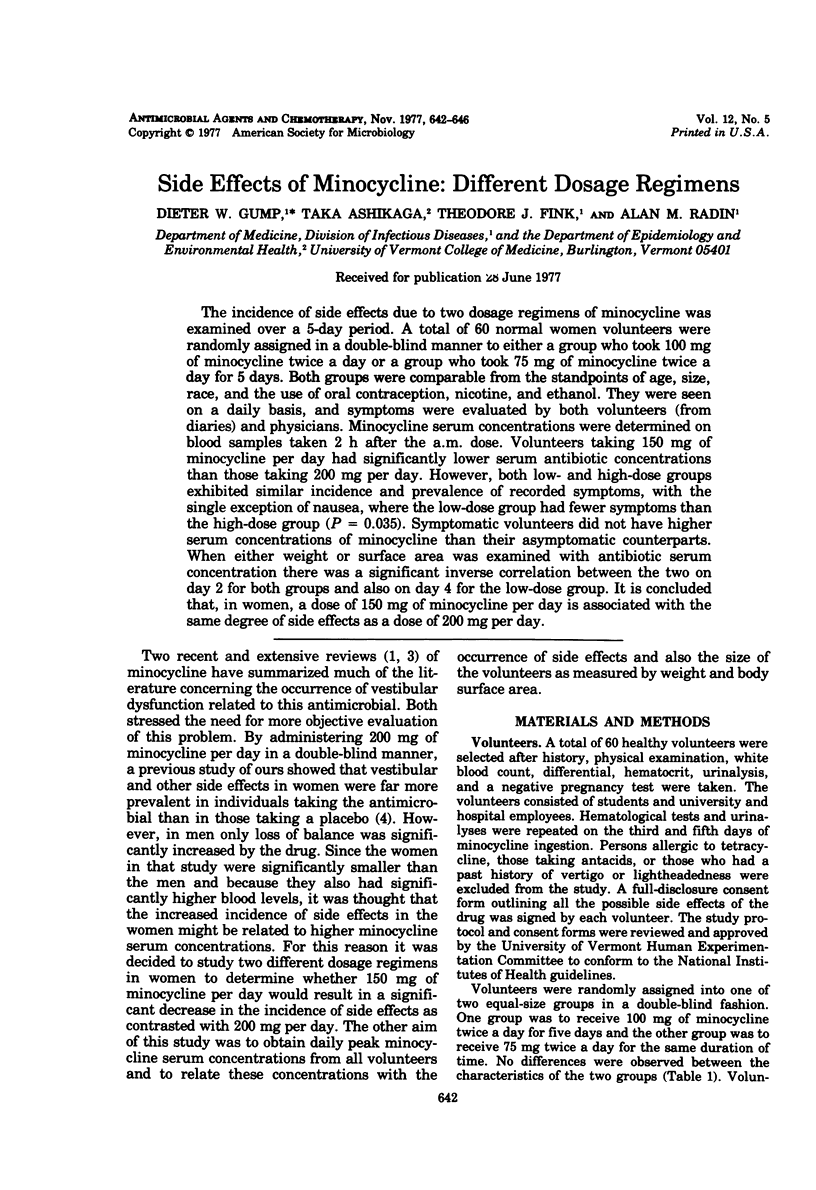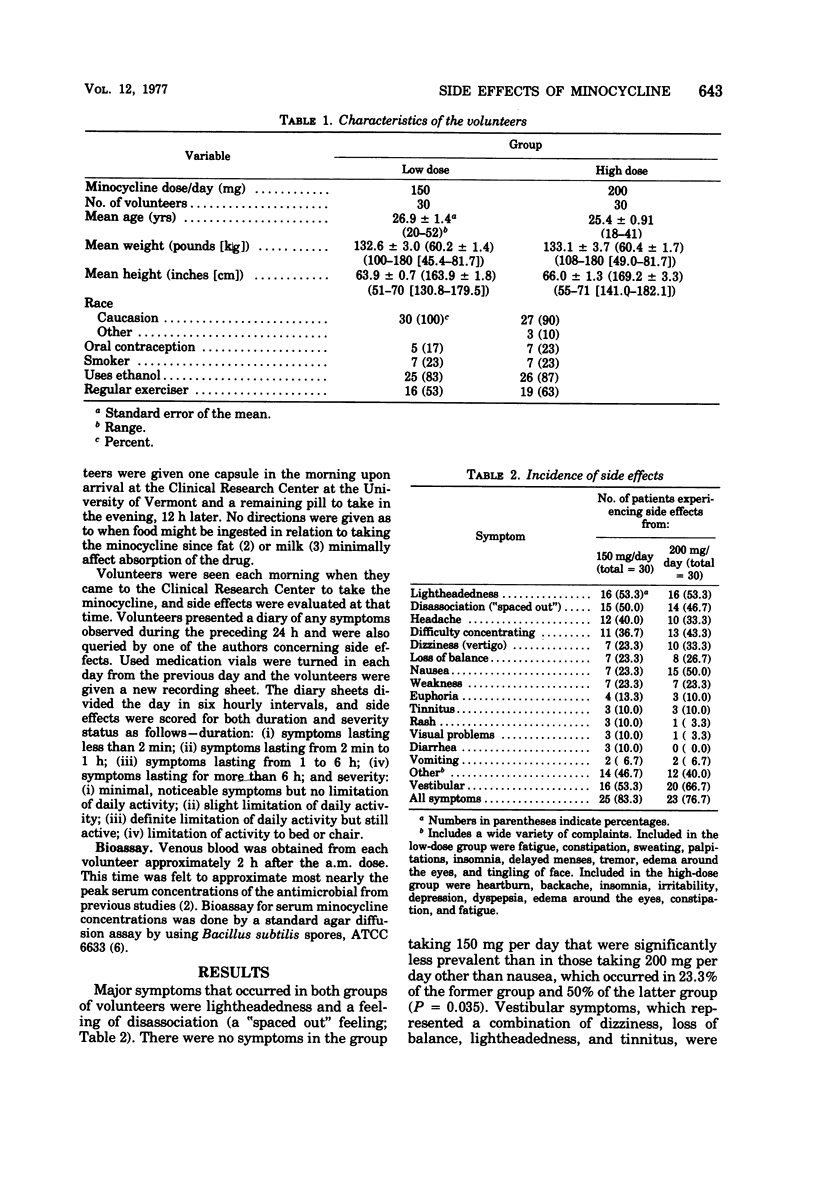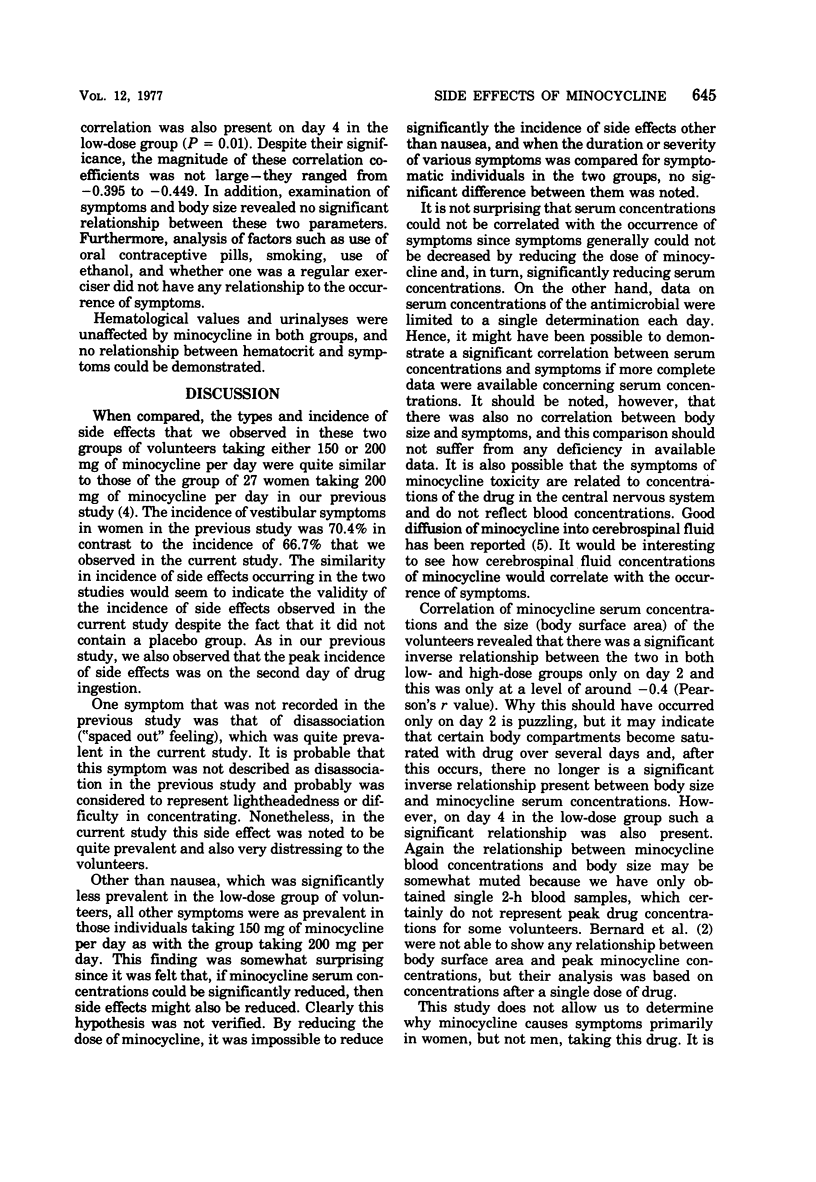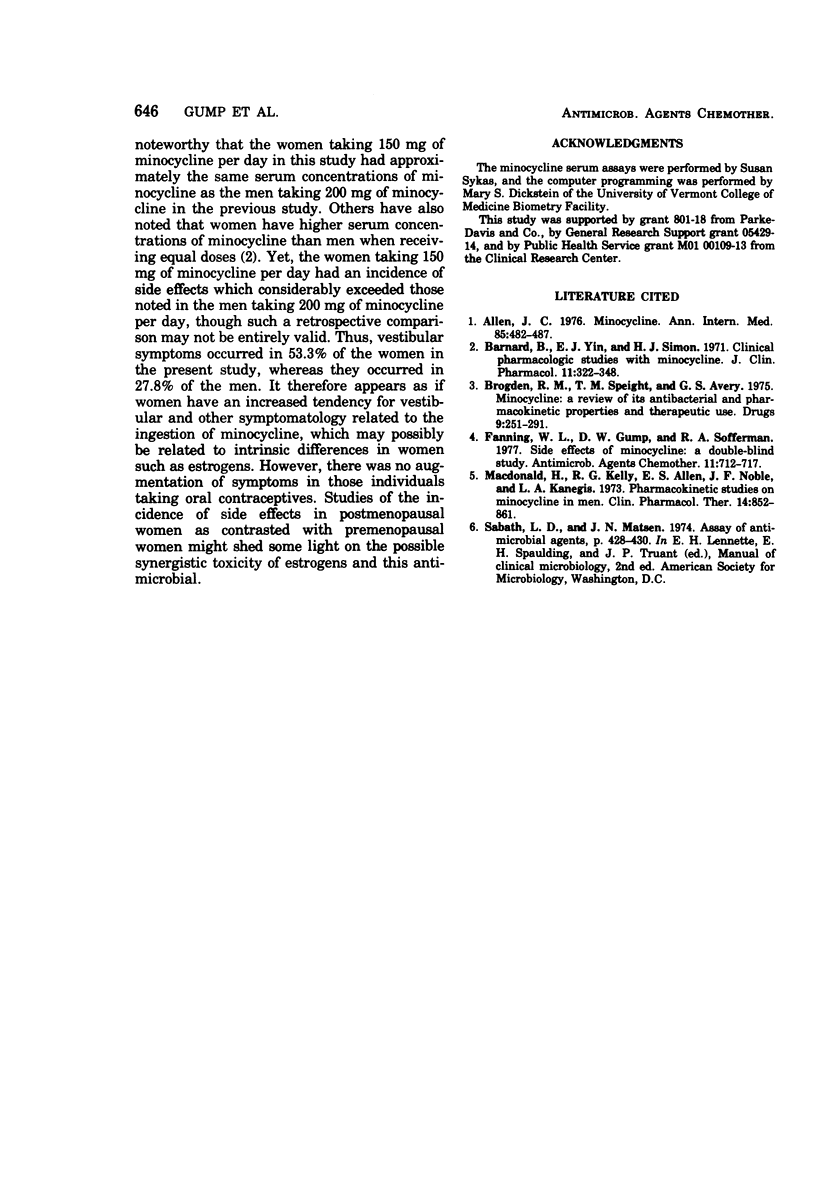Abstract
The incidence of side effects due to two dosage regimens of minocycline was examined over a 5-day period. A total of 60 normal women volunteers were randomly assigned in a double-blind manner to either a group who took 100 mg of minocycline twice a day or a group who took 75 mg of minocycline twice a day for 5 days. Both groups were comparable from the standpoints of age, size, race, and the use of oral contraception, nicotine, and ethanol. They were seen on a daily basis, and symptoms were evaluated by both volunteers (from diaries) and physicians. Minocycline serum concentrations were determined on blood samples taken 2 h after the a.m. dose. Volunteers taking 150 mg of minocycline per day had significantly lower serum antibiotic concentrations than those taking 200 mg per day. However, both low- and high-dose groups exhibited similar incidence and prevalence of recorded symptoms, with the single exception of nausea, where the low-dose group had fewer symptoms than the high-dose group (P = 0.035). Symptomatic volunteers did not have higher serum concentrations of minocycline than their asymptomatic counterparts. When either weight or surface area was examined with antibiotic serum concentration there was a significant inverse correlation between the two on day 2 for both groups and also on day 4 for the low-dose group. It is concluded that, in women, a dose of 150 mg of minocycline per day is associated with the same degree of side effects as a dose of 200 mg per day.
Full text
PDF




Selected References
These references are in PubMed. This may not be the complete list of references from this article.
- Allen J. C. Minocycline. Ann Intern Med. 1976 Oct;85(4):482–487. doi: 10.7326/0003-4819-85-4-482. [DOI] [PubMed] [Google Scholar]
- Bernard B., Yin E. J., Simon H. J. Clinical pharmacologic studies with minocycline. J Clin Pharmacol New Drugs. 1971 Sep-Oct;11(5):332–348. [PubMed] [Google Scholar]
- Brogden R. N., Speight T. M., Avery G. S. Minocycline: A review of its antibacterial and pharmacokinetic properties and therapeutic use. Drugs. 1975;9(4):251–291. doi: 10.2165/00003495-197509040-00005. [DOI] [PubMed] [Google Scholar]
- Fanning W. L., Gump D. W., Sofferman R. A. Side effects of minocycline: a double-blind study. Antimicrob Agents Chemother. 1977 Apr;11(4):712–717. doi: 10.1128/aac.11.4.712. [DOI] [PMC free article] [PubMed] [Google Scholar]
- Macdonald H., Kelly R. G., Allen E. S., Noble J. F., Kanegis L. A. Pharmacokinetic studies on minocycline in man. Clin Pharmacol Ther. 1973 Sep-Oct;14(5):852–861. doi: 10.1002/cpt1973145852. [DOI] [PubMed] [Google Scholar]


